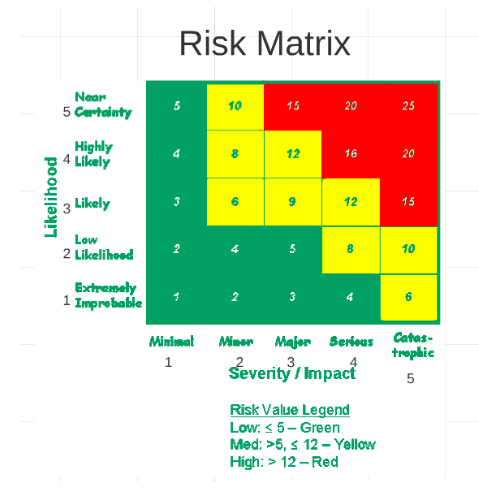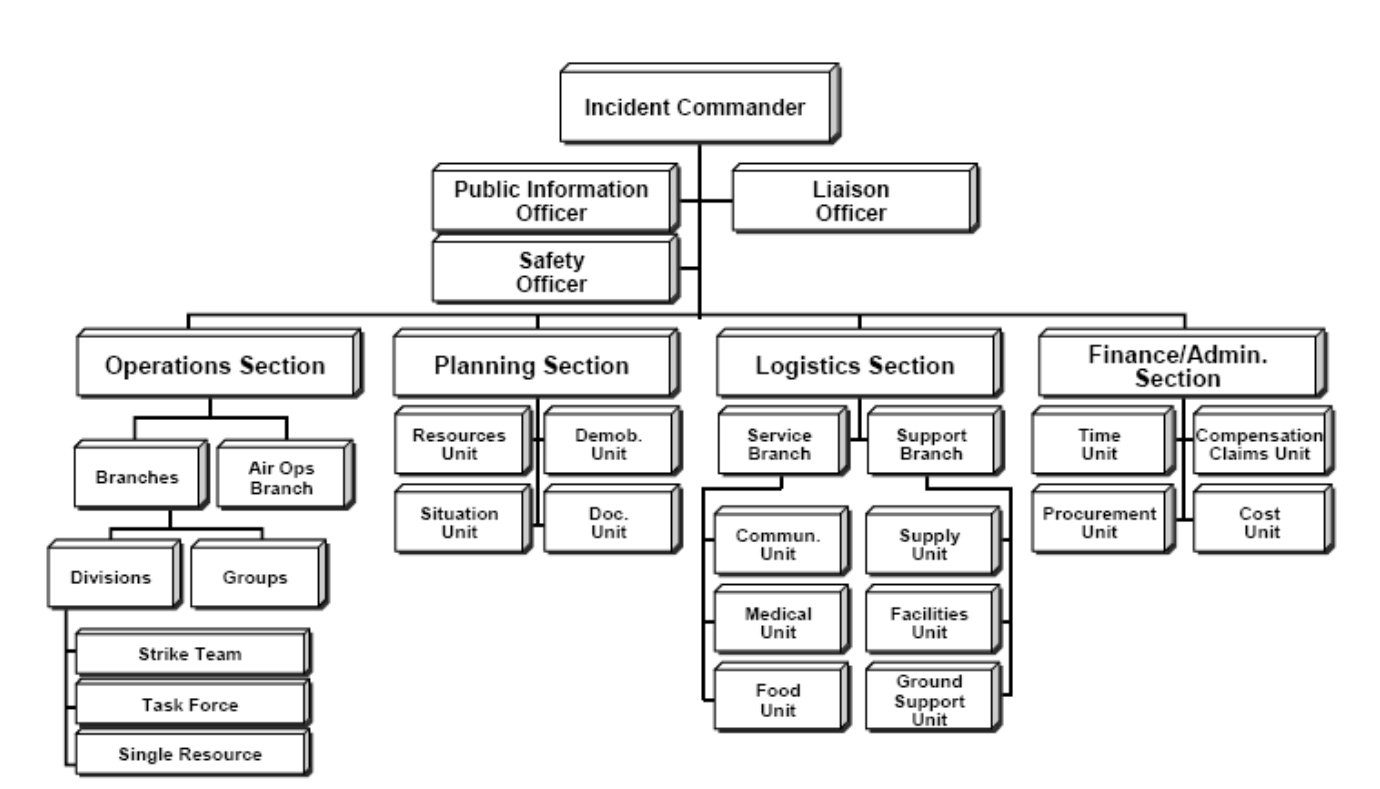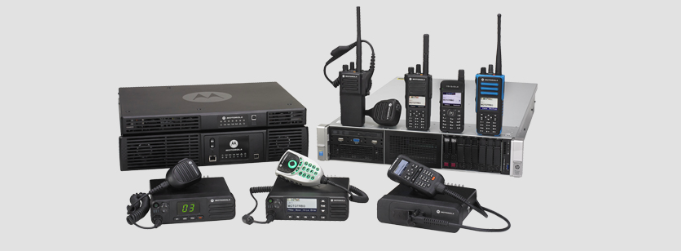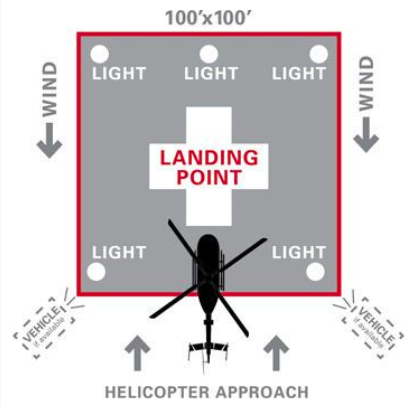Organizing, planning, and executing an event or event series is complicated. Of course, if you’re reading this guide, you are aware of how many moving parts event planning requires. Often, safety is the challenge that is too scary or too much to deal with so it gets pushed to the backburner. This page aspires to cut through that confusion and procrastination and provide some guidance. If you have additional questions or concerns, we would be happy to talk about them with you! Contact us by email at safety@joffeemergencyservices.com or by phone at: 800.913.6270
Assessing Your Risk
The first step to keeping an event safe? Understanding the unique challenges you face. A focused and targeted risk assessment helps manage event safety. The process is simple.
Develop a list of potential safety issues that could affect your event. This list should be a collaborative effort, incorporating the perspectives of many people who care and think about the event. Find out what they’re concerned about. Write it all down on a whiteboard.
Once you have a long list of risks, give each of them a priority number. An easy way to do this is to rate each risk from 1 to 5 on the likelihood that it will happen and 1 to 5 on the impact it would have if it did. Then, multiply. So, if an event is a 3 on the likelihood scale and a 4 on the impact scale, it will be an overall 12. For an event like that, you will need to have a solid mitigation plan (don’t worry, we’ll get there.) As you continue this process, a list of priorities will develop, and the task of addressing these risks can begin. 
At the risk of repeating ourselves, every event is unique. Even the same event will see a variety of different variables and occurrences from year-to-year. When it comes to understanding the specific concerns your event faces, a risk profile is essential. Once created, it will be an invaluable resource in guiding the specific steps you’ll take to keep the event safe. Creating an event’s risk profile is a time to rely heavily on the personal history and experiences you and your team bring to the table. What kind of injuries have occurred in the past at your event? Is the weather usually rainy or blazing hot? Where do most of your resources end up being directed?
The answers to these questions will inform the risk profile, and thus the actions that need to be taken in advance, during, and following your event. For example, if your event attracts a rowdy group, the security planning will be a crucial aspect of limiting incidents and managing them as they occur.

Now that there’s a list of risks to keep in mind, let's get to work on an action plan so that your event can go off without a hitch. Any mitigation plan worth its salt addresses the risks and concerns that could negatively affect your event. The specifics of such a plan varies based on a myriad of factors, of course. Generally speaking, however, the way that event risks are controlled falls in a few common categories. As you look at the list of potential issues developed above, think through how they can be resolved through the following strategies.
Elimination of
Substitution, for an event’s purposes, is replacing something of concern with a more manageable option.
Engineering a risk away refers to containing its impact through design improvements.
In that same vein, administrative solutions rely on preparation to control risk. An administrative solution minimizes risk by instituting safe operating
One final option is personal protective equipment (PPE). This could take the form of cups of water handed out to runners or ponchos distributed in the rain. PPE is a preventative measure that can minimize medical concerns specific to your event.
“Dealing” With Local Authorities
An important relationship over the course of your event’s lifetime will be the one that develops with local authorities. If some occurrence or variable threatens to derail your event, these groups will be a critical resource. Of course, if the relationship is poor, they may serve as more of an obstacle than an asset. When dealing with local authorities, it can be useful to consider a few things:
Which authorities do you need to talk to? You need to know exactly which authority you need to talk to when dealing with events or safety. Is it a federal, state, county, or city authority with the relevant information? It’s basic, but having a plan will save you time.
What is the purpose of that authority? What does the department that you’re on the phone with even do? Event organizers have enough on their plate to begin with, and a lot of times, the person you’re talking with will know even less than you do about what needs to be done. If you’re able to ensure that the group you’re talking to is the right one for your needs, the event safety process is smoother.
What is the command structure? All departments have a command structure, much like the military. Doing the research and understanding how that structure functions allows you to reach the right person on the phone when you need them. If an emergency occurs at your event, this preparedness step should help you know exactly who to contact. Knowing the command structure of your local authorities is an effective way to immediately improve event safety. A sample command structure can be found here:
Selecting an On-Site Medical Provider
For any event that lasts more than 15 minutes or has more than 15 attendees, even if it is considered low risk, you need to be prepared for the possibility of medical issues. The specific level of medical support needed varies depending on the nature of the event. However, at a minimum there should be one (1) EMT with the appropriate supplies to manage critical injuries or illness until an ambulance can arrive on the scene.
One thing to remember regarding medical/first aid staff is that regardless of your risk assessment or your preferences, some jurisdictions, be they city, county, or state, may have specific requirements to be able to operate within their area. It is not uncommon for these requirements to only be disclosed at the last minute, which can result in significant extra expenses or the risk of the local government canceling your event.
When it comes to securing the necessary medical coverage for your event there are a few different ways to go about it.
Look for internal or external volunteers. Many events consider locating someone within their volunteer base who is a physician, nurse, or EMT to be the “First Aid”/Medical person for the event. This is quite risky since the volunteer may not have any background in emergency or event medicine, are likely to not have the necessary equipment or supplies, cannot respond to multiple locations at once, and will have no insurance coverage to protect you or your event. As an example, it may sound great if an MD and an RN both volunteer. However if the MD is a dermatologist and the RN a pediatric nurse, will either be competent and confident in managing a cardiac arrest in a participant in their mid-30's? This option may save some funds up front, but can leave you vulnerable as well.
Contract with a local ambulance service. This option is often folks' first thought - contacting the local fire department or 911 ambulance company. This is certainly an option, however, it also comes with tradeoffs. These groups may provide more medical coverage than your event needs, at a higher price than can be budgeted for. Additionally, these departments are also unable to confirm their ability to staff your event until less than a month from your event, requiring a backup plan be in place.
Hire a specialty event medical provider. These are companies such as Joffe Emergency Services whose sole mission is to ensure that your event goes smoothly with appropriate risk management and medical coverage. Joffe Emergency Services has been in business for more than twelve years and our senior leadership and Event Safety/Medical teams have well over 150 years combined experience. By hiring an on-site medical firm you guarantee that you will receive a complete risk audit of your event, have an opportunity for a discussion with the person responsible for putting together the coverage for your event, and have the appropriate number of highly-qualified, trained, and experienced medical providers on-site the day of your event.
When it comes to hiring such a company you should make sure you’re clear on what’s being provided. If you receive a quote for just exactly what you’re asking for and the company doesn’t want to take the time to conduct a site visit or risk assessment at your event, that should be a warning sign.
Selecting an On-Site Security Team
Similarly, there are a few questions that are useful to ask when determining what kind of security coverage your event needs and who should be entrusted to provide that coverage.
Type of guards: armed or unarmed? There are two primary types of guards an event can contract - armed and unarmed. Your decision will depend on your need as well as the requirements of permitting from the local authority. Some permitting authorities, depending on the event and what will be going on at the event, may require you to have an armed guard for the safety of the public. Other permitting authorities might require you to use the local police department or county sheriff’s department. Always check with your permitting authority to ensure you have the right type of guard(s) at your location.
How many guards? Many times, the number of guards is dictated by your permitting authority or the size of the event that you have. For example, one of the events that Joffe supports requires four guards during the event when the public is onsite as well as one overnight guard. Since the event also serves alcohol, we are legally required to have two roaming guards and two posted at the entrance and exit to the festival area.
Certified or uncertified? When you are looking for security staff, you will always want to make sure they and the company they work for are certified. The company should also be licensed within the state where your event is held. It’s also a good idea to check with the local authorities to ensure that they don’t have a specific license or certification requirement within the county or city. It is never a good idea to hire a company or person that isn’t certified, as they may not know what the local policies are for security personnel or even what to do in an emergency situation.Managing Alcohol
Know the laws. When dealing with alcohol, it's of the utmost importance that you know and understand the laws in your event's area. While it is general knowledge that legal drinking age within the United States is twenty-one, there are also several other regulations that will complicate the sale of alcohol. Is your event located in a dry (no alcohol sales permitted) or a wet (allows alcohol sales) county/area? How many ounces of liquor can be in one drink? What is the maximum alcohol content allowed in beer? These are all important questions that you have to know - both for the safety of your event and to protect it from potential liability.
Who do you hire? In many states anyone that sells and/or serves alcohol to another person must be registered and certified by that state’s health department. In the state of Texas, for example, you must be certified by two agencies - the Texas Alcoholic Beverage Commission as a bartender and by the Texas Department of Health as a food and beverage handler. When looking for people to serve/sell alcohol at your event, ensure that they are certified by the appropriate state agency and that they have their certification with them. Many state agencies will do random checks of events to make sure these requirements are being followed. Additionally, when you hire people that are properly certified, they will be able to keep your event safer by knowing the signs and symptoms of someone that's had enough. In many states, if an overserved event attendee gets into an accident, your event is held liable for any deaths or injuries that occur.
Maintain Security of Alcohol. Now, in contrast to the previous section, our discussion of security here doesn’t mean a physical security officer. What we’re talking about is the security of the product. Make sure that when your event stores alcohol, it is kept in a secure location where someone can have eyes on it. For example, if your event has a food truck that is also serving alcohol, make sure that they aren’t storing it behind the trailer with easy public access.
The communications infrastructure that supports your event is a critical element of building a safe environment for attendees. Broadly speaking, a communications infrastructure refers to the tools and plans at your disposal for getting crucial messages to event staff and event attendees. If something changes during the course of your event, there must be a mechanism for swiftly communicating those changes to everyone. While “communications infrastructure” calls to mind an elaborate control center with a thousand screens, it can also take the form of a bullhorn used to address a large crowd! The important thing is to find a communications plan that works for the needs of your event.
Also ensure that messages travel appropriately through the chain of communication and to the right destination. If a medical incident needs to be reported to a local hospital, does your event have someone who knows how to communicate important medical information clearly and concisely? In moments of serious medical concern, you don’t want to risk transmitting an incorrect or partial description of the issue. The infrastructure and planning you build in advance will benefit your event throughout its existence.

If you are using radios for your event, use a channel guide to establish clear communications. An example is below.
Sample Channel Guide:
Channel 1 - Emergencies Only (Everyone by default switches to channel 1 when an emergency is declared.)
Channel 2 - Medical & Security
Channel 3 - Parking Lot Management
Channel 4 - Event Operations
Channel 5 - PR/Marketing
Channel 6 - Private channel for longer conversations
Channel 7 - Private channel for longer conversations
Channel 8 - Construction/building team/course design team
No matter the location, an event organizer should expect and demand the high level of medical care that attendees and employees deserve. However, managing the safety of events located in remote areas can be challenging. Local authorities will likely be slower in responding to incidents, increasing the necessity of capable medical care on site. Potentially, this may also raise the level of care that needs to be available at the event site, as hospitals may be farther away. Consider how a remote event may have special considerations. Access to the event site may be limited to one or two roads, presenting challenges in transporting patients if needed. If there is a significant on-site injury, how would a medical evacuation work? Where would a helicopter land if necessary?
One aspect of a remote event to consider is the aforementioned challenge of communication, both internal and external. Radios are a common and effective mode of communication for event staff. If the event takes place outside of cell range, there needs to be a way to contact event attendees beyond a text message or phone call.
A remote or isolated event site will also affect materials. A capable medical team will ensure they have adequate supplies in order to avoid occupying the roads for resupply.
Weather challenges can be more pressing in remote areas as well. Ensure that your event’s risk assessment takes into account the potentially more severe weather outcomes in remote areas.
Depending on what the challenges are, you may need to set up a helicopter landing zone to have an air rescue ambulance available. Take into account local requirements/suggestions for creating air rescue landing zones, but at minimum you should designate an area that is 100 feet by 100 feet and not bordered by any telephone lines, power lines, or trees. Additionally, the ground surface should be relatively flat and even. Consider this diagram as you’re planning your location. (And remember - do NOT park cars in a landing zone!)

As we’ve discussed, perhaps the most critical and relevant outside group to the success of your event are the local authorities assigned to the details of your event.
Before the Event
This relationship will start well before the “crunchtime” period leading up to your event begins. The goal? To build confidence in yourself and your event in the eyes of the local authorities. (We always knew you could do it!)
Before the event is the time to demonstrate that you know about the local and state laws that will regulate your event. Show these authorities that you’ve considered your event’s risks and how you will keep attendees safe. Share the knowledge and expertise you and your event team have on local regulations, including any relative permitting and licensing. In effect, the goal of this conversation is to let these groups know that you know how to run the event. Reassure them that they won’t need to micromanage or devote precious resources to solving your problems, because you’ve already thought of them!
Morning of the Event
Before the outset of your (wildly successful) event, you’ll have a chance to address this group one final time. This is an opportunity to review, to communicate expectations to everyone, and to verify everyone has the resources and knowledge necessary to meet those expectations. It is important to mention in this discussion that despite all the planning your team did, unforeseen circumstances may occur. Establish how everyone will communicate in that event.
As you communicate that message, it’s important to recognize that this plan should be consistent regardless of how severe the circumstances may be. While the consequences are obviously different, the plan for communicating during a large scale emergency is structurally similar to how your teams would communicate in the event of a lost child. No matter what issue arises, your event will need communication contingencies, redundancies, and a clear chain of command.
When it comes to hosting the actual event, there are always curveballs. The best way to be prepared for emergencies is to expect the unexpected. Robust emergency operating procedures will minimize the impact a potential emergency would have on the event.
Ensure that your team is properly trained and knows how to respond to situations as they arise. This preparation step includes emergency drilling and hands-on training in CPR and First Aid. Utilize the risk assessment tool at the top of the guide to determine what your team should be trained in and prepared for should an emergency occur. An unprepared response to an emergency situation can lead to unsafe conditions, wasted resources, and confusion.
Of course, the specifics will vary, but here are some potential emergency situations that may occur at your event. Consider how your team would response to each situation.
Okay, that list can be pretty scary and intimidating. Here’s some of the tools you can use to respond.
Weather and Reporting Injuries
No matter if the morning that dawns on your event is icy, rainy, or beautiful, your event will need to take it into safety consideration. Of course, no matter how it starts, the weather can change rapidly. Someone on your team should be monitoring forecasts and updating leadership every hour. While important, the weather aspect of safety preparation is perhaps more self-evident than some of the others we have discussed in the guide. Icy conditions might affect the roads that people take in and out of the event, or a summer downpour could determine whether obstacles are safe for attendees to participate in.
However, based on our experience providing medical coverage at thousands of events across the country, the injuries we see the most can happen on a crystal-clear day. Heat injuries - like sunburns, heatstroke, and cramps - are incredibly common and must be part of weather-related preparation. If possible, provide sheltered areas where event participants can find shade and replenish electrolytes.
Now, how do we know that heat causes the most issues for us? As a medical team, we are responsible for managing and maintaining the clinical report of any patient we serve at an event. If these patients need to seek further medical care or insurance payments, it is imperative that we have these records. Ensure that your medical team is capable and has a plan for recording and storing patient information.
Equipment You’ll Need
Your event likely involves a lot of equipment, so perhaps it’s comforting to know that ensuring your event is safe doesn’t take all that much more. A good communication plan will involve radios or some other centralized communication system.
The medical provider covering your event will have lots of equipment, too. If they don’t, it’s fair to wonder if they’re the right fit for your event. Their equipment needs will vary depending on the type of event they are serving. If the event is a race of some kind, they may have a vehicle that can bring medical capability out to the course and transport injuries back to the medical area when possible.
That medical space, if not situated indoors, will likely be a tent. Inside, there should be appropriate areas for patients to lie down and receive treatment. The space should provide more privacy for patient/provider interaction if needed. While your medical team will be responsible for a full accounting of what medical supplies (like gauze, antiseptics, and splints) should be in this area, confirm they are equipped to handle the specific medical concerns that you expect to see at your event.

Measuring Success
It’s fairly simple to measure how successful your event safety preparations were as you debrief and review post-event. Were there any injuries? If so, did the medical team provide coverage and care that attendees liked? How quickly did they arrive on the scene and begin providing treatment? Was the caliber of that treatment up to our (high) expectations?
Regardless of how serious it was, your team was also likely faced with a larger safety incident. Perhaps a group of inebriated friends lost a member of their group along their merry way. Or, a family struggled to find where they parked their car at the end of the day. Did all attendees know where and how to get the help they needed with the incident? Also, did your team either have the relevant information that the individual needed, or failing that, know how to acquire it quickly?
These questions can be boiled down to three core concerns that are the metrics we use to measure success in event safety.
When the answers to these questions are yes, you can go ahead and give yourself a passing grade in event safety this year! Next year is right around the corner, though, so start preparing next week! Okay, next month is fine, too.
That's it! We hope you found the information included in this guide to be useful. If you’d like clarification or want to have a conversation regarding something in this guide, please reach out to us. We are always excited to discuss new technologies, safety best practices, or concerns you have about your event’s preparedness.
Most importantly, we know how time-consuming, stressful, and just brutal running your event can be. When you don’t know where else to turn, turn to us!
Created By

The Joffe Family
READ MORE ABOUT EVENT SAFETY ON JOFFE'S BLOG
Feeling (Not So) Hot: Heat-related Conditions and Illnesses
Summer officially begins next week (June 21st is the summer solstice this year), which means more time to play in the sun! With an increase in events that make participants sweat and more time in direct heat, the following heat-related conditions and illnesses may arise...Read more
Weather Prep: When the Rain Falls
From drizzling to full-blown thunderstorms, rain is hardly ever a welcomed occurrence at an outdoor event. While many participants may insist that the rain is there to make them tougher on the race course, your job is to make sure they stay safe...Read more
Keeping Risk Management in Mind When Planning an Event
Imagine this. You’re hosting your company’s first 5K. As you’re reviewing your marathon’s medical plan, or assessing your event safety needs, the last thing you want to think about is people getting hurt....Read more